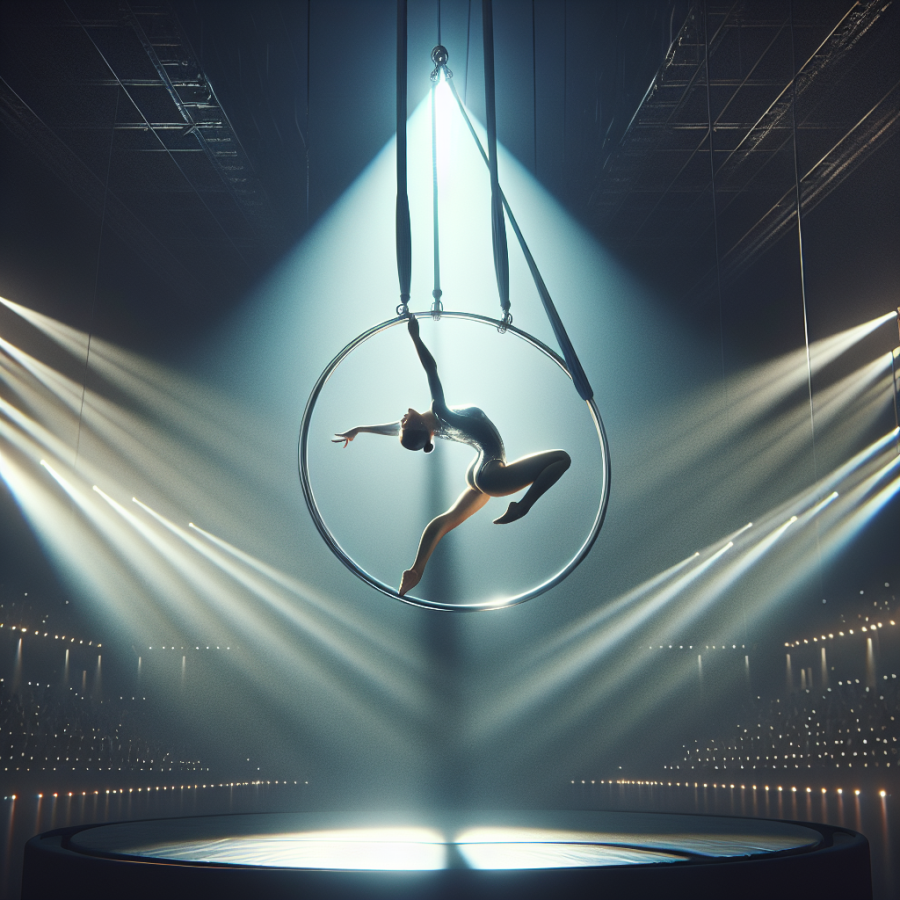The Enchanting World of Aerial Hoop Performances
Aerial hoop, also known as lyra, has established itself as a captivating discipline that combines circus arts, dance, and acrobatics, entrancing audiences with its combination of strength, elegance, and daring. This aerial apparatus, typically fashioned from metal and suspended from the ceiling, allows performers to create a beautiful array of shapes and movements in the air.
The allure of an aerial hoop performance lies in the seamless blend of athleticism and grace. Artists must possess remarkable upper body and core strength to execute lifts and holds, yet they also need the flexibility and poise of dancers to create fluid lines and extensions while spinning or swinging. The hoop serves as a stage, a partner, and a tool for the artist to choreograph routines that tell stories, evoke emotions, and often leave onlookers in awe.
Training for aerial hoop is a rigorous yet rewarding process. Initially, newcomers work on building the necessary muscle and endurance to support their body weight. They learn the fundamentals, such as mounting and dismounting the hoop, basic poses, and safety techniques. As their abilities advance, performers begin to explore dynamic moves, drops, and spins that add excitement and complexity to their acts. The constant challenge is to balance dynamic movements with static poses to showcase flexibility and control.
Aerial hoop artists often incorporate other disciplines into their performances, such as dance and gymnastics, to enrich their acts. This multidisciplinary approach allows performers to create unique pieces that reflect their individual artistic voices. Choreography is crucial in an aerial hoop piece, as it dictates the flow and the transitions between movements. It ensures that the routine is not just a series of tricks but a cohesive and enthralling performance.
Safety is of paramount concern when it comes to aerial performances. Aerialists train extensively to minimize risks, and they use a variety of rigging techniques and safety equipment. Mats and spotters are common during training sessions, while harnesses and safety lines may be used during more complex or high-risk performances.
The theatrical aspects of an aerial hoop show are just as important as the physical components. Costuming, music, and lighting play significant roles in setting the tone and enhancing the visual appeal. Performers often select costumes that complement their routine's mood while allowing for a full range of motion. The choice of music is integral to the performance, guiding the rhythm of the moves and accentuating the emotional impact. Lighting is used to focus attention, create ambiance, and highlight the performer's movements.
Read also:
Understanding the Intricacies: How Soccer Works
Techniques and Expressions in Aerial Hoop Artistry
Aerial hoop, also known as lyra, is an art form that combines dance, acrobatics, and gymnastics, taking each element to new heights—quite literally. As this graceful discipline continues to evolve, artists have developed a plethora of techniques and expressions that contribute to the rich tapestry of aerial hoop artistry.
Core Techniques:
1. The Mount and Dismount: The foundation of any aerial hoop routine hinges on the execution of mounts and dismounts. Artists must master various techniques such as the Delilah mount, the straddle up, or the graceful side mount to begin and conclude their performances effortlessly.
2. Static Poses: Poised at the heart of aerial hoop performances are the static poses that showcase an artist's strength and flexibility. Poses such as the Mermaid, Man in the Moon, and the Back Balance epitomize the combination of elegance and control required to execute these moves flawlessly.
3. Dynamic Movements: Aerial hoop routines are invigorated by dynamic movements that add an element of risk and excitement. Swings, spins, rolls, and drops challenge the artist's momentum control and spatial awareness. Techniques such as the Windmill, the Hip Circle, and the daring Drop to Mermaid are pivotal examples.
4. Transitions: The fluidity of an aerial hoop performance is often characterized by seamless transitions. Aerialists craft transitions to weave together static poses and dynamic movements, creating a cohesive narrative. This could involve threading the leg through the hoop to transition from a Stag pose to an Amazon, or a hands-free slide from an Angel pose to a Skater’s Delight.
Expressive Elements:
1. Choreographic Storytelling: Aerial hoop artists often embed narratives within their routines. Gestures, facial expressions, and poses are meticulously chosen to convey emotion and story, transforming a series of movements into a powerful act of expression.
2. Musicality: The relationship between the artist's movements and the chosen music is fundamental. Using tempos and rhythms to accentuate dynamics within the routine enables the performer to create a harmonious synergy with the score, driving the expressive power of the performance.
3. Costuming and Aesthetic: The visual impact of aerial hoop is enhanced by creative costuming. Often reflective of the routine's theme, costumes can range from whimsical and elaborate to minimal and sleek, playing a significant role in conveying the artist's intended message.
4.




